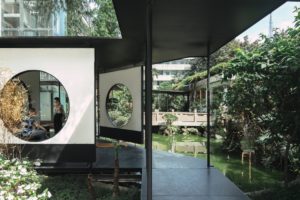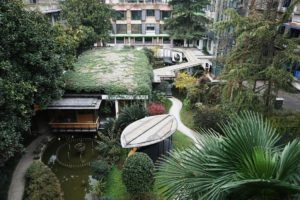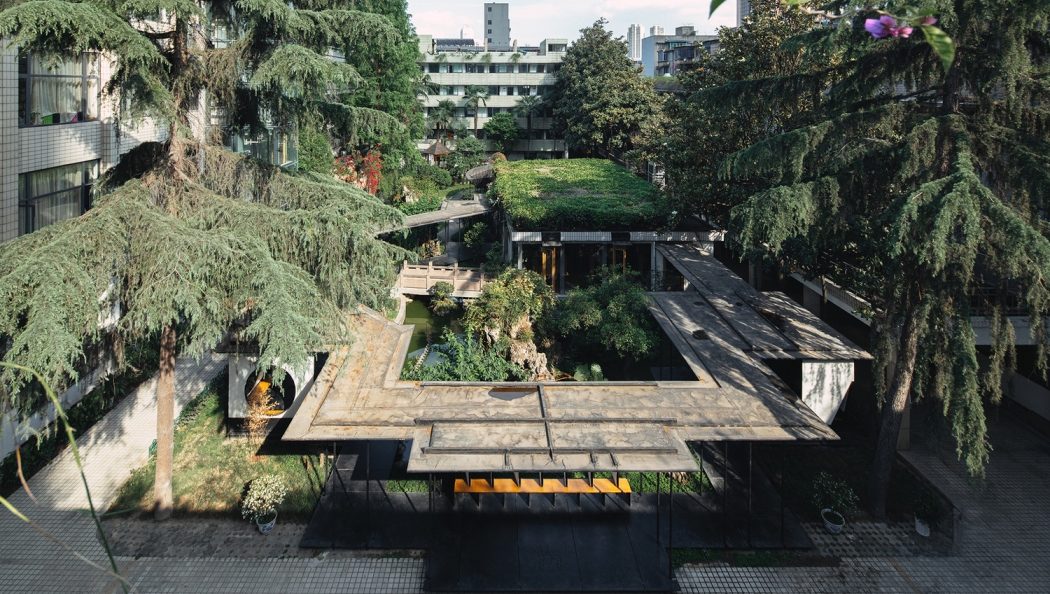In Chengdu, China the historic Chengdu Garden Hotel was in danger of being demolished.
But now, it has been beautifully repurposed and renewed by architect Xiaoqin Zhang of Epos Architecture into commercial space as the Garden Island of Hi-coffice, in a way that respects both the past and the present.
 Considering the client’s limited budget, and the requirement to retain the site’s heritage, a “minimum intervention” approach was adopted to redevelop the property.
Considering the client’s limited budget, and the requirement to retain the site’s heritage, a “minimum intervention” approach was adopted to redevelop the property.
The veranda, the basic design element, follows the original path in the garden, and the central hotel lobby is transformed into a tea house.
The former canopies are replaced and extended into a closed loop with the tea house as the starting and also the ending point of the path.
The veranda runs away from the stone and plants in the garden, and creates a delicate landscape of “proper dense, various views, full of twists and turns”.
The veranda is constructed of light steel structure. Thin columns, back beams, and the ground are coated with dark gray fluorocarbon paint. The same color conceals the material properties and produces a cruise path beyond material perception.
 Considering the various landscape of rockery and planting along the path, the veranda is enlarged in some spots to form rest-able nodes, which provides “in-motion viewing” and “in-position viewing” in the courtyard, and also turns an ornamental courtyard into a place where people can share, communicate and even love.
Considering the various landscape of rockery and planting along the path, the veranda is enlarged in some spots to form rest-able nodes, which provides “in-motion viewing” and “in-position viewing” in the courtyard, and also turns an ornamental courtyard into a place where people can share, communicate and even love.
The Garden Island Courtyard has been redesigned as a form of “contemporary garden,” and is the public service area for the joint office.
The original design intent is not to design a garden, but to create an environment overlapping daily life and poetic scenes, which is exactly in line with the spirit of Chinese traditional gardens. Therefore, it is logical to achieve the similar space atmosphere in this space.
All images are courtesy of Epos Architecture.

